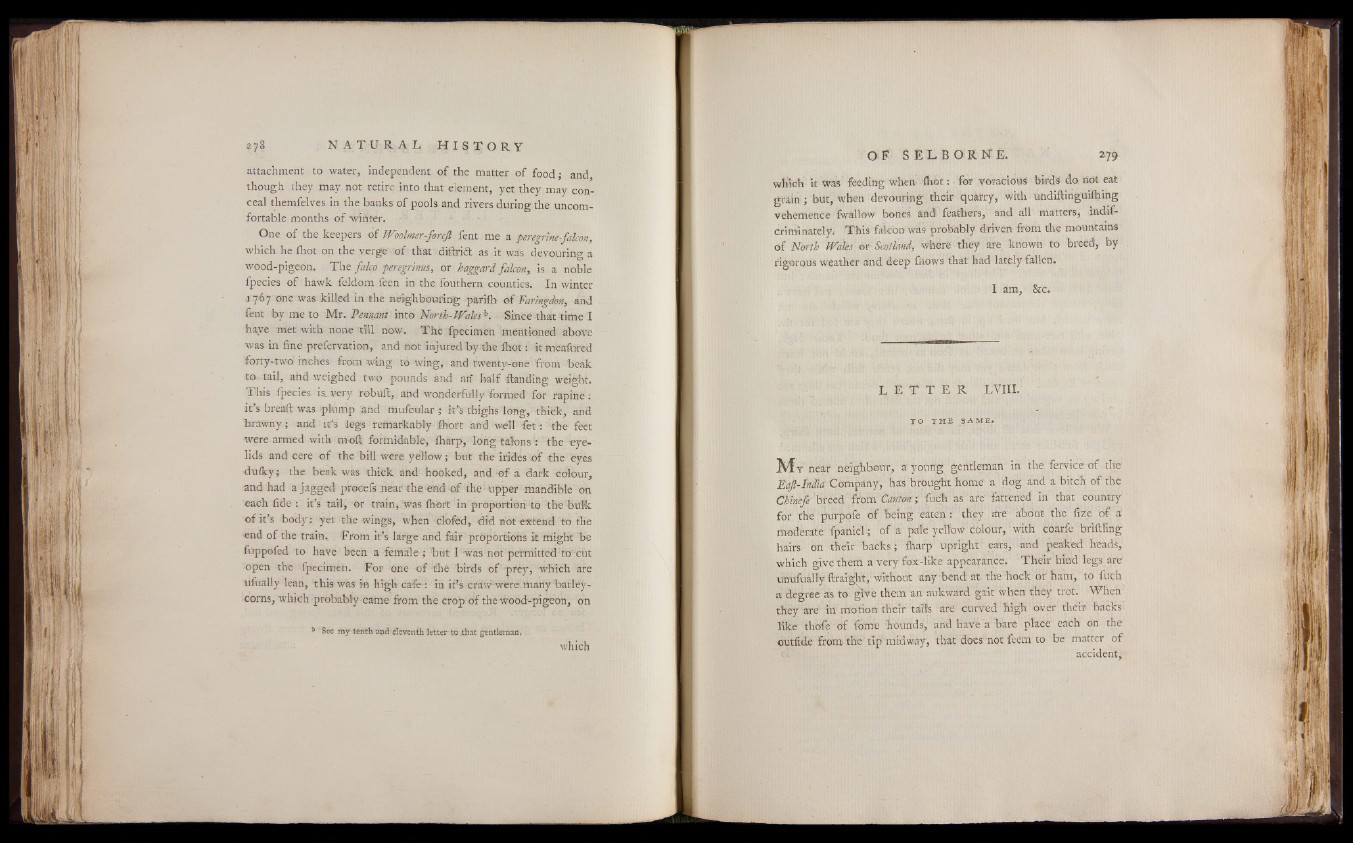
attachment to water, independent of the matter of food; and,
though they may not retire into that element, yet they may conceal
themfelves in the banks of pools and rivers during the uncomfortable
months of winter.
One of the keepers of Woolmerforefi fent me a peregrine-falcon,
which he fhot on the .verge of that diftridt as it was devouring a
wood-pigeon. The falco peregrinus, or haggard falcon, is a noble
fpecies of hawk feldom feen in the fouthern counties. In winter
1767 one was killed in the neighbouring parifh of Farkgdm, and
fent by me to Mr. Pennant into North-Wales*. Since that time I
have met with none till now. The fpecimen mentioned above
was in fine prefervation, and not injured by the fllot: it meafured
forty-two inches from wing to wing, and twenty-one from beak
•to tail, and weighed two pounds and an half Handing weight.
This fpecies ist very ro-buft, and wonderfully formed for rapine :
it’s breaft was plump and mufcular ; it’s thighs long, thick, and
brawny; and it’s legs remarkably fhor-t and well f e t : the feet
were armed with m-oft formidable, (harp, long talons : the -eyelids
and cere of the bill were yellow; but the bidesrH" the eyes
dulky; the beak was thick and hooked, and of a dark colour,
and had a jagged procefs near the end of the upper mandible on
each fide : it’s tail, or train, was Ihort in proportion to -the bulk
of it’s body:: yet the wings, when clofed, did not extend to the
end of the train. From it’s large and fair proportions it might be
fuppofed to have been a female-; but I -was not permitted to:cut
open the fpecimen. For one of the birds of prey, which are
ufually lean, this-was in high cafe-: in iFs craw-were:many-barleycorns,
which probably came from the crop of the wood-pigeon, on
® See my tenth aad eleventh letter to-that gentleman.
which
which it Was feeding when fhot: for voracious birds do not eat
grain ; but, when devouring their quarry, with uiidiftinguilhing
vehemence fivallow bones and" feathers, and all matters, Indif-
criminately. This fakon was probably driven from the mountains
of North Wales or Scotland, -where they are known to breed, by
rigorous weather and deep fhows that had lately fallen.
I am, &c.
L E T T E R LVIII.
TO TH E S AM E .
M r near neighbotir, a young gentleman in the fervice of the
Eajl-India Company, has brought home' a dog and a bitch of the
Chinefe breed from Canm; fuch as ate' fattened in that country
for the purpofe of being eaten : they are about the fize of a
moderate fpaniel; of a pale yellow Colour, with coarfe briftfing
hairs on their hacks; fharp upright ears, and peaked heads,
which give'them a very fox-like appearance. Their hind legs are
unufually ftraight, without any bend at the hock or ham, to fu'ch
a: degree as to give them an aukward gait when they trot. When
they are in motion their tails are curved high over their backs
like thofe of fame hounds, and have a bare place each on the
outfide from the tip midway, that does' not feem to be matter o f
accident,